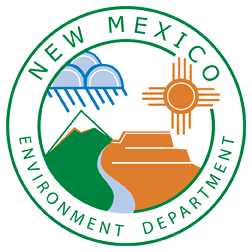Watershed-Based Plans (WBP) are written to address water quality problems for watersheds with impaired streams.
The New Mexico Environment Department (NMED) monitors water quality throughout the state. Water bodies with high pollutant amounts are considered to be impaired. Once a stream is considered impaired, NMED calculates a Total Maximum Daily Load (TMDL) which states the maximum amount of a pollutant the stream can contain while not being impaired. WBPs describe causes and sources of impairment and recommend changes that reduce the pollution in an impaired stream.
WBPs are voluntarily written and authors are required to seek public input. Most are written as an avenue to Clean Water Act funding for projects to protect or improve water quality. Once a plan is created, any organization (private, county, tribal, federal, etc.) can apply for funding to implement the plan’s recommended projects.
Pollutant sources can vary greatly, and WBPs are written to address the specific water quality impairments of the streams they cover. WBPs funded by NMED must address at least one impairment that has a TMDL, but a plan does not have to address every impairment on a stream- plans can focus on one or two specific impairments of interest to stakeholders or for which the authors have expertise.
Once a draft WBP is reviewed by NMED it must be reviewed and accepted by EPA Region 6 before projects can be funded using Section 319 funds under its scope. All WBPs have to meet the nine elements in the Nonpoint Source Program and Grants Guidelines for States and Territories to be accepted by EPA.
Key Documents
- List of EPA-Accepted WBP, Draft WBP, and Watershed Restoration Action Strategies (WRAS) Last update: 5/18/2023.
- Wetland Action Plans (WAP)
- List of watershed planning groups in New Mexico (2022)
- Resources for developing Watershed Based Plans

